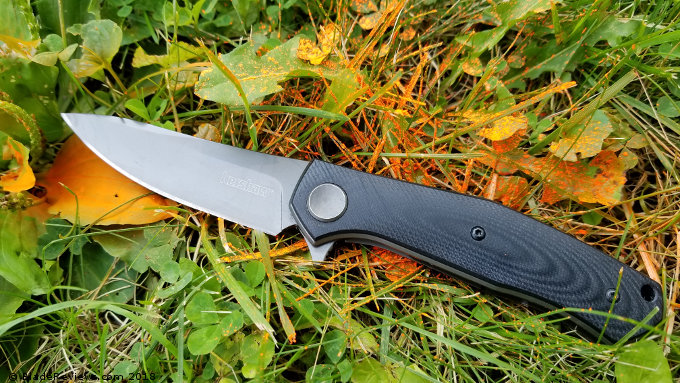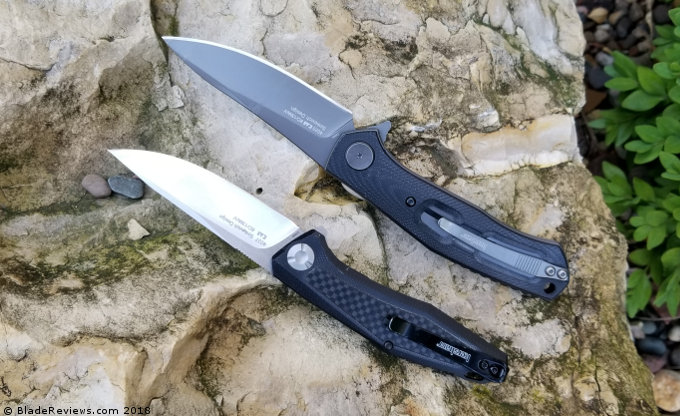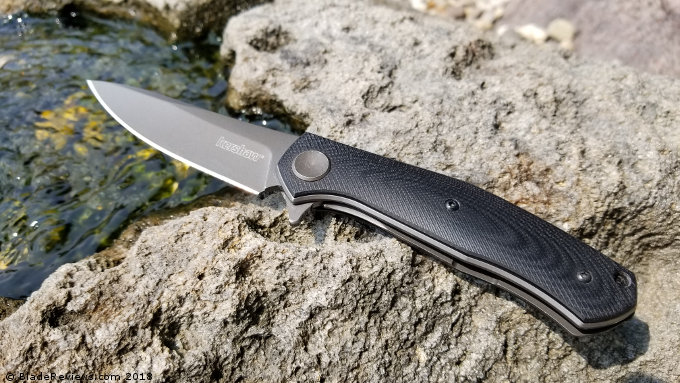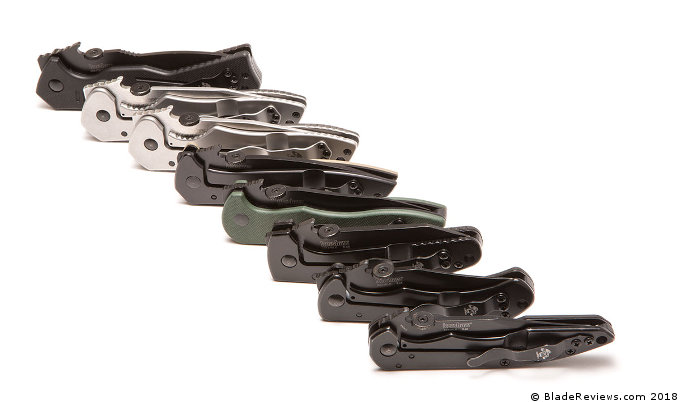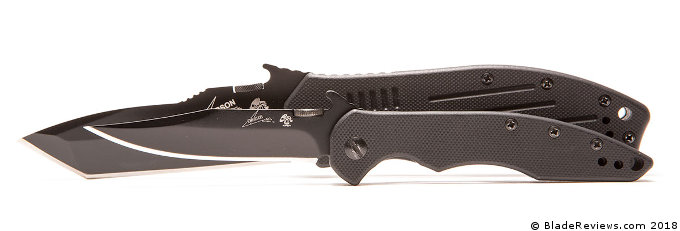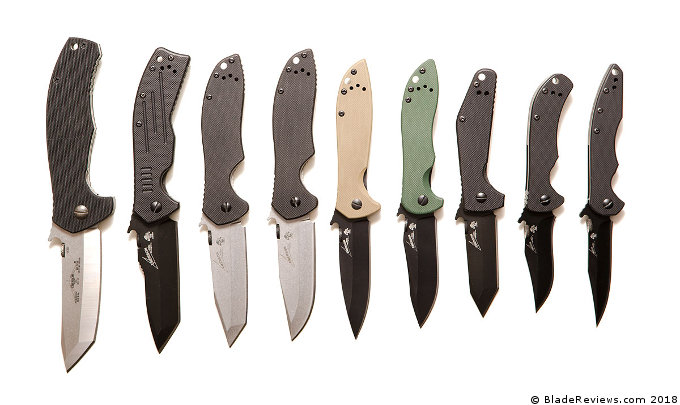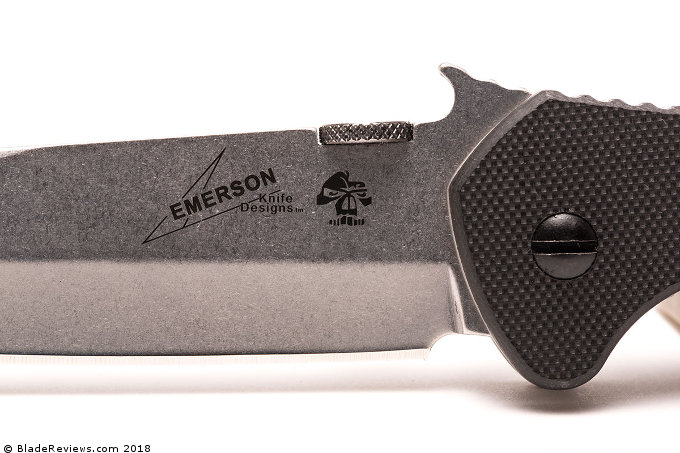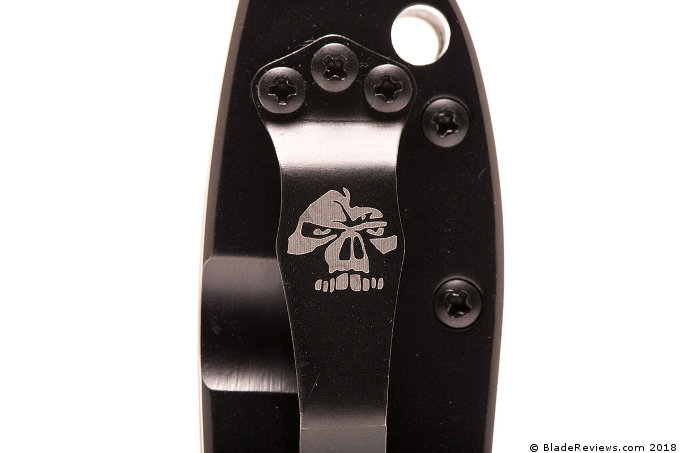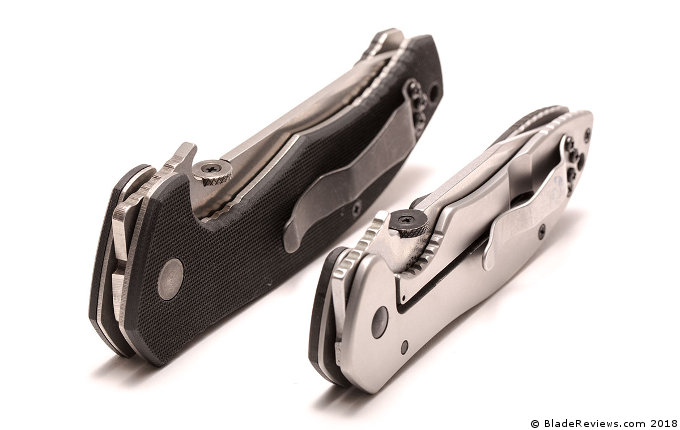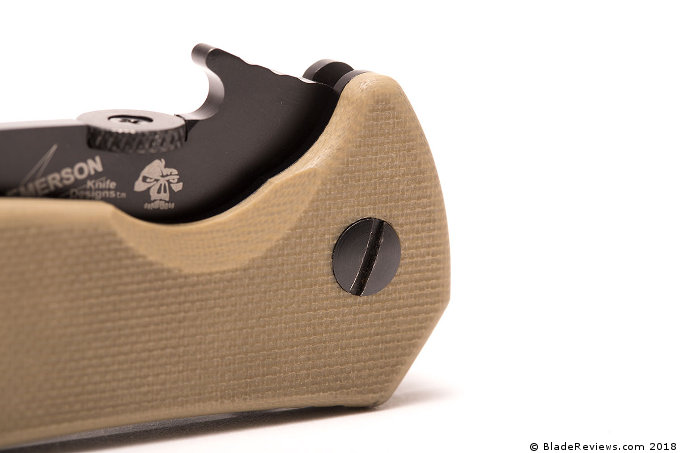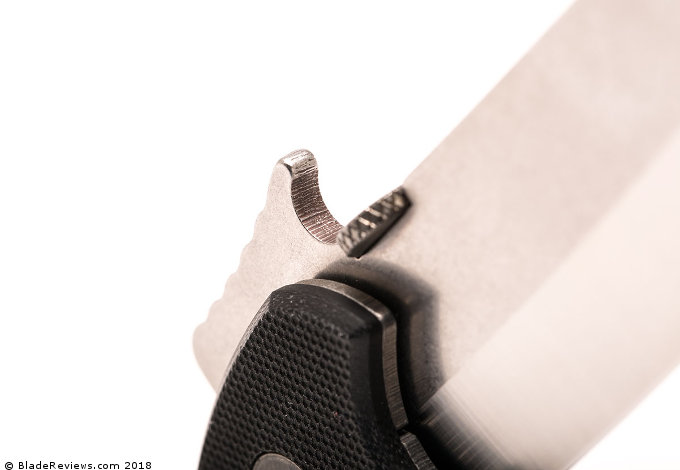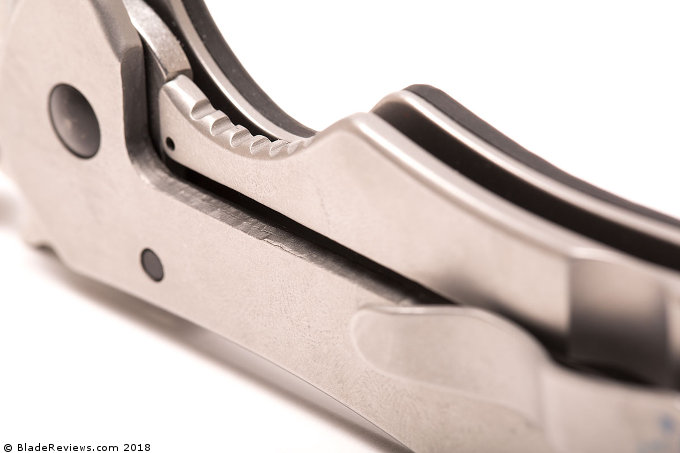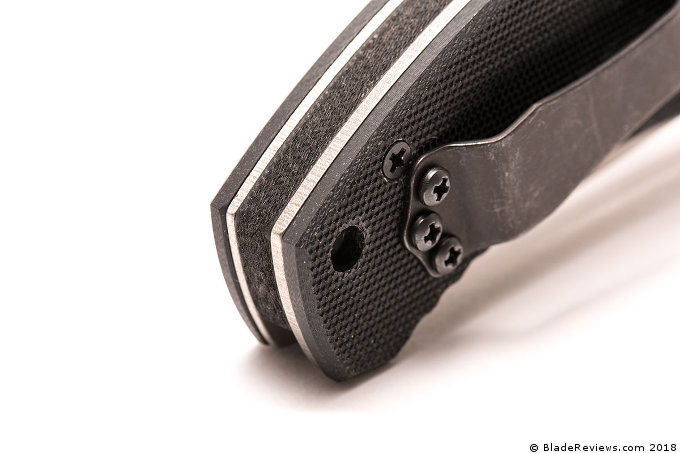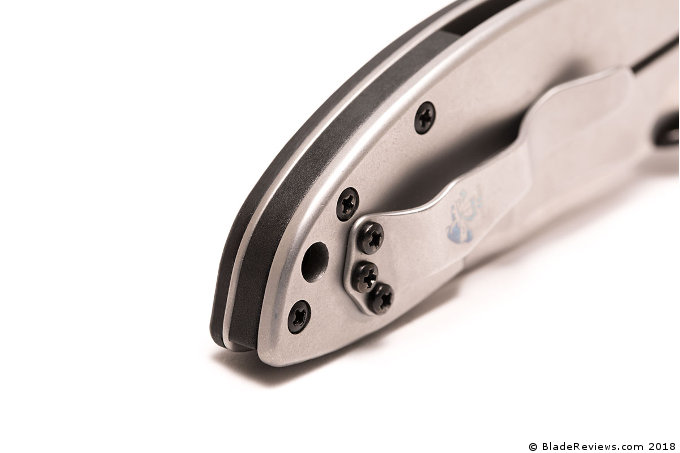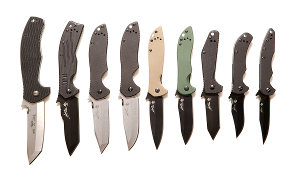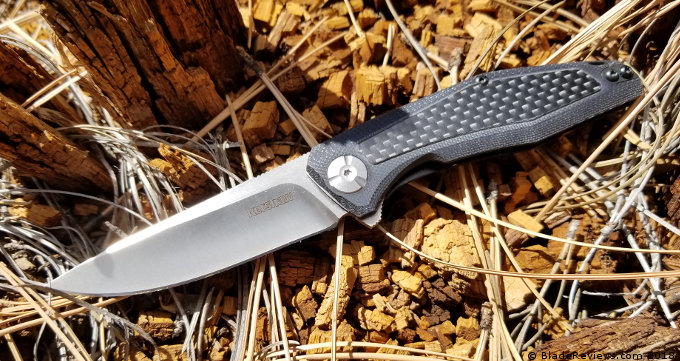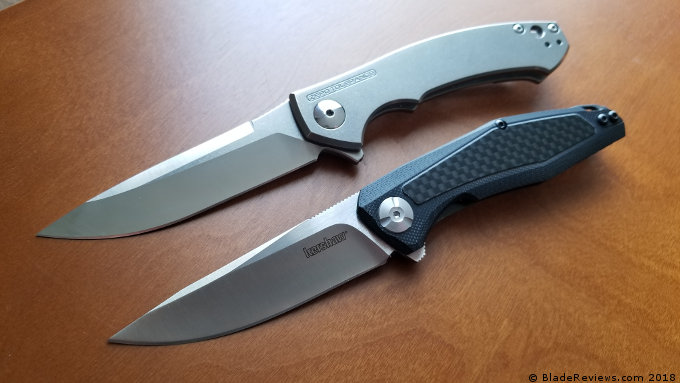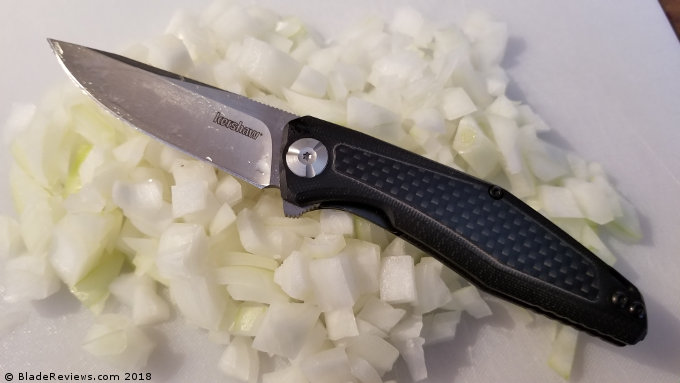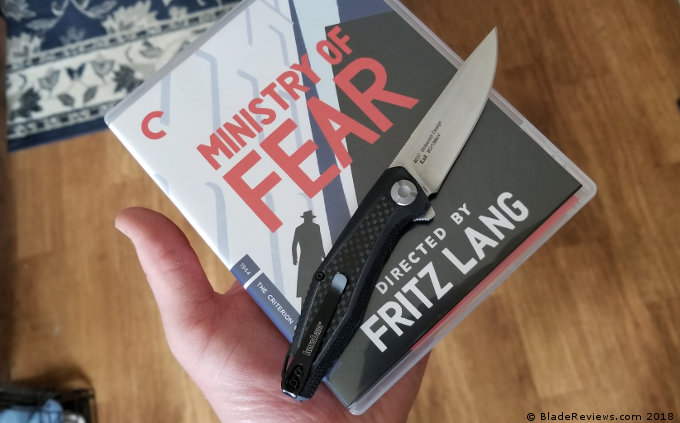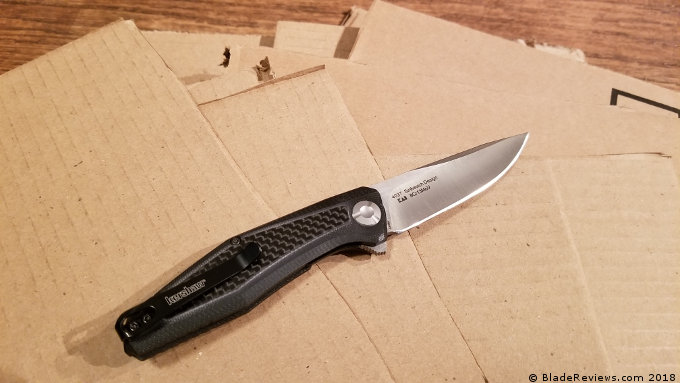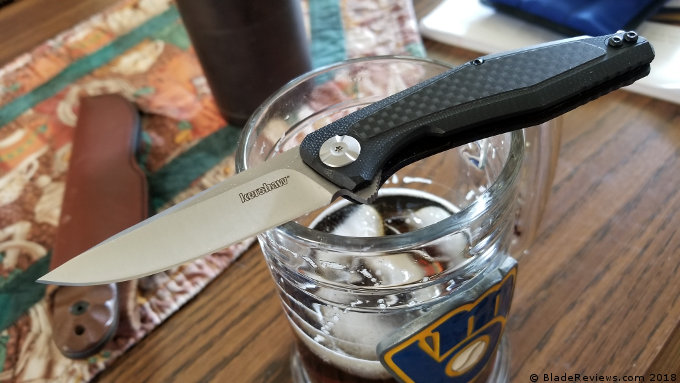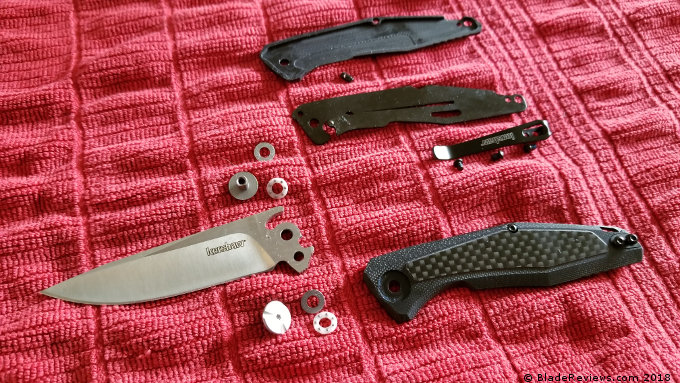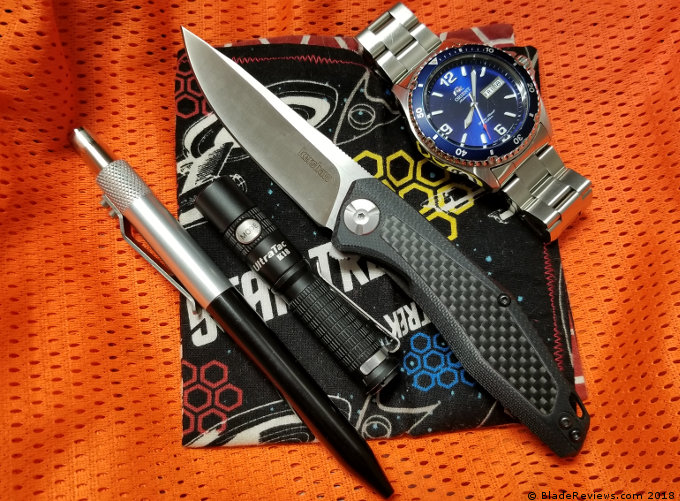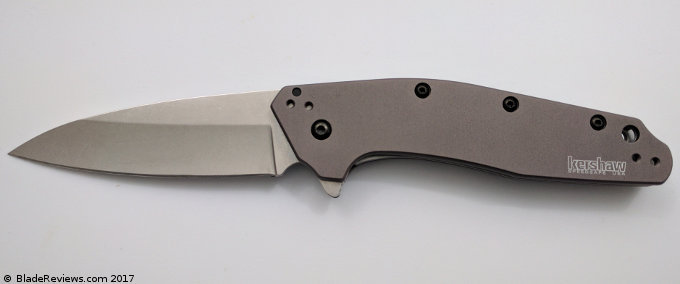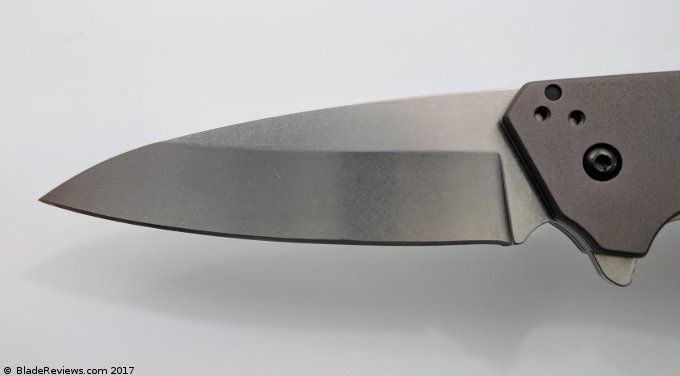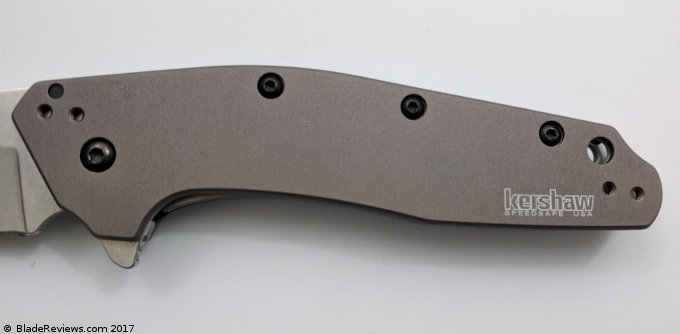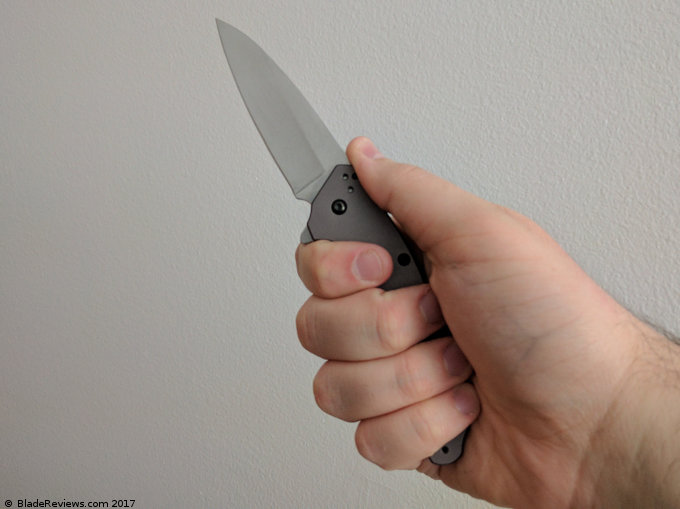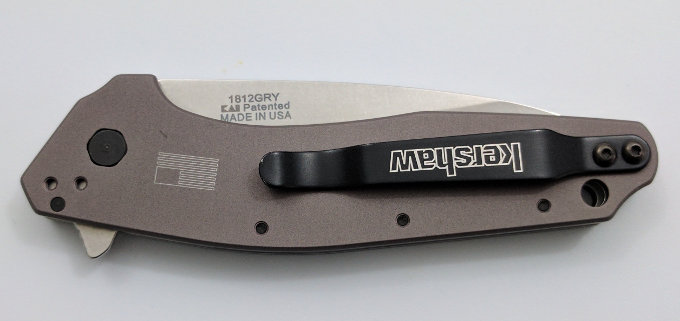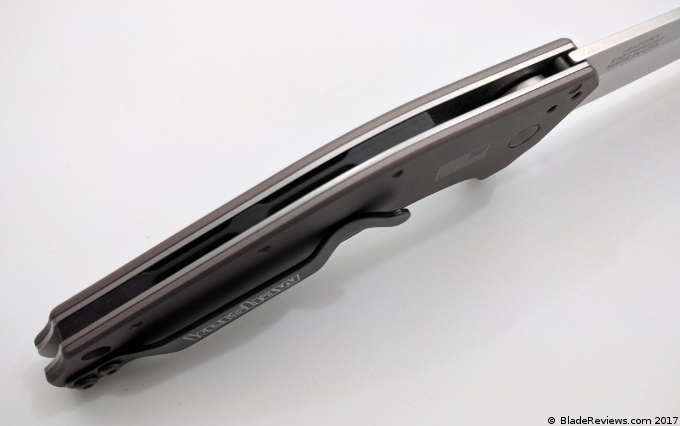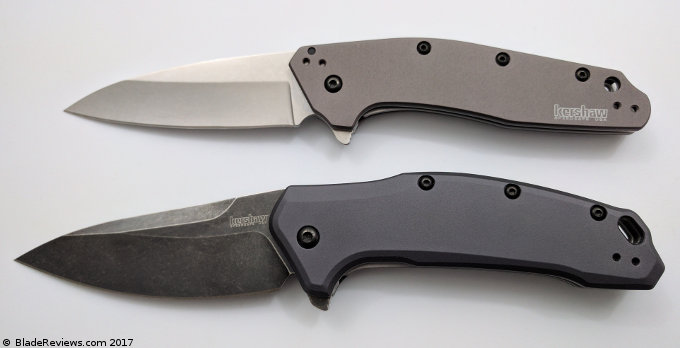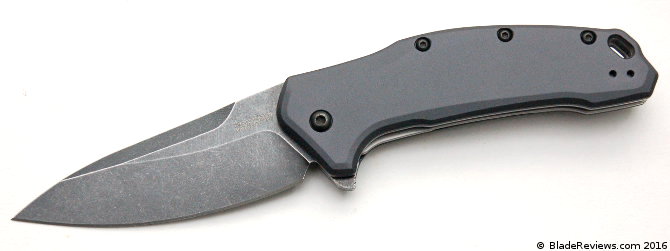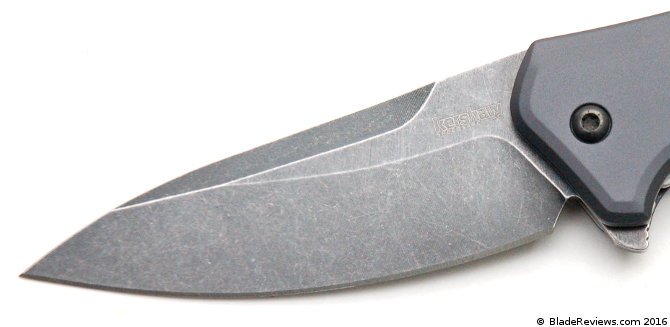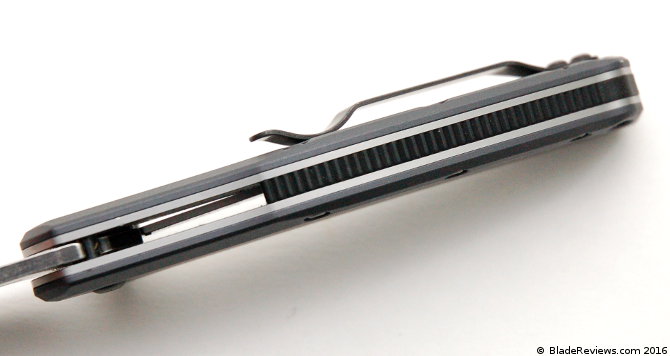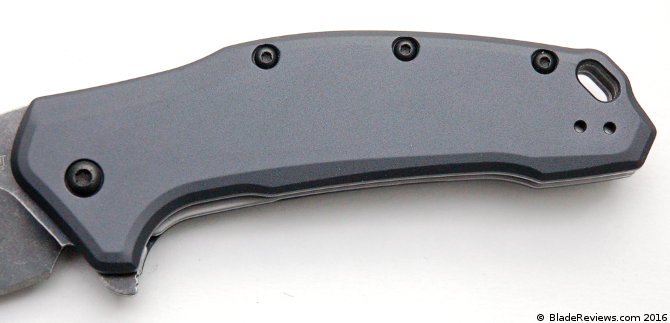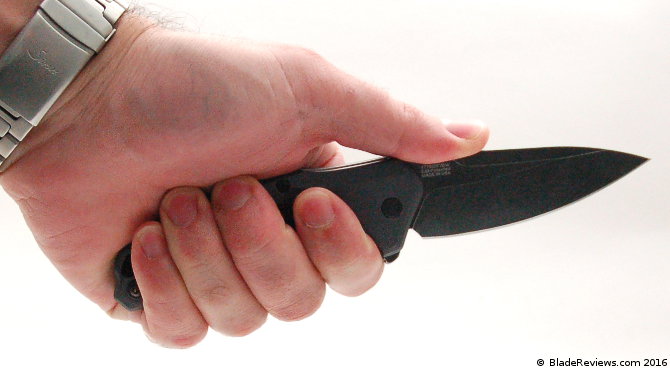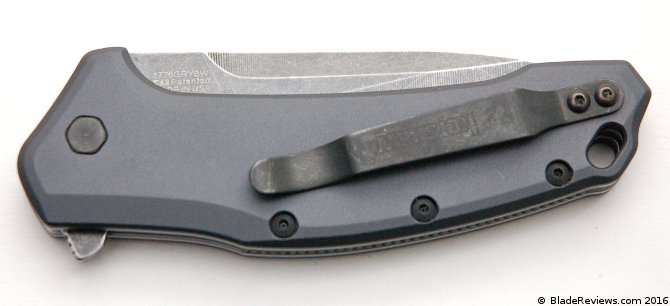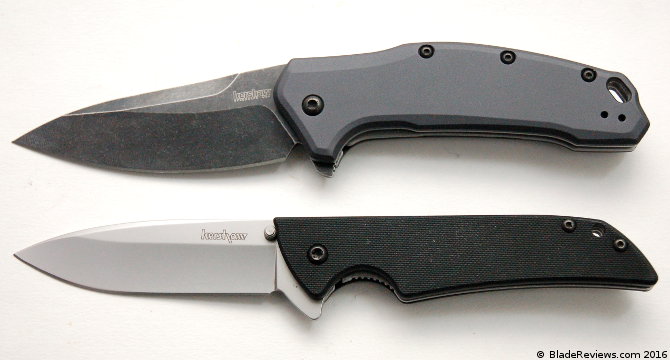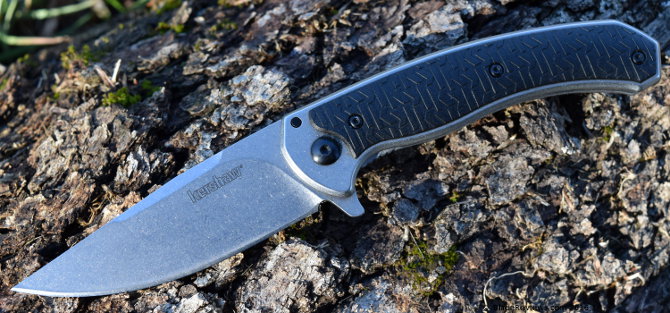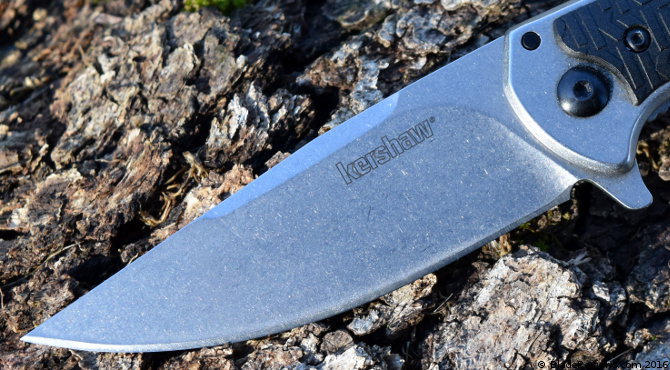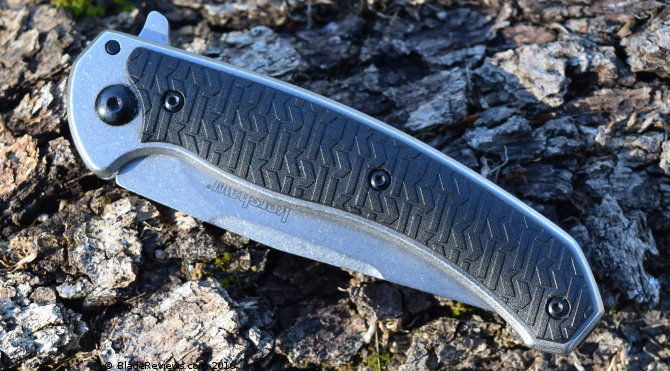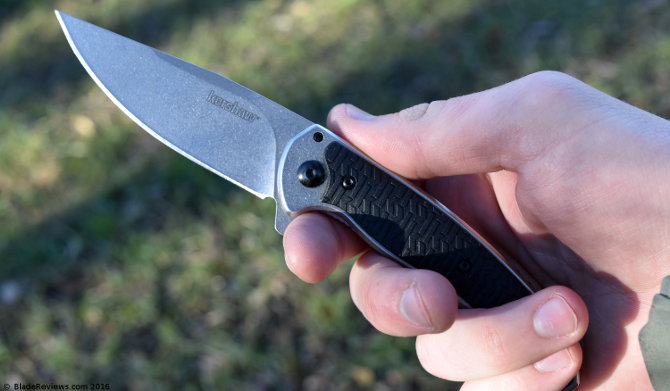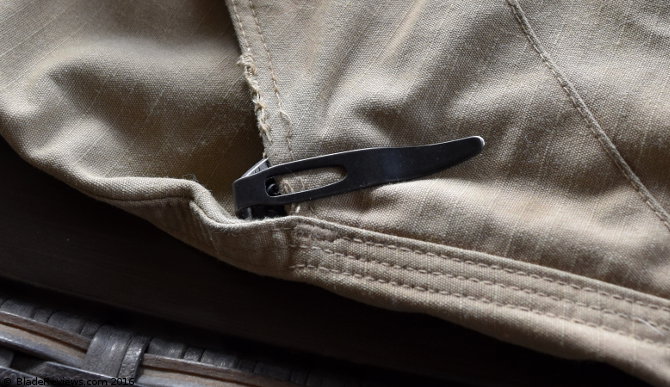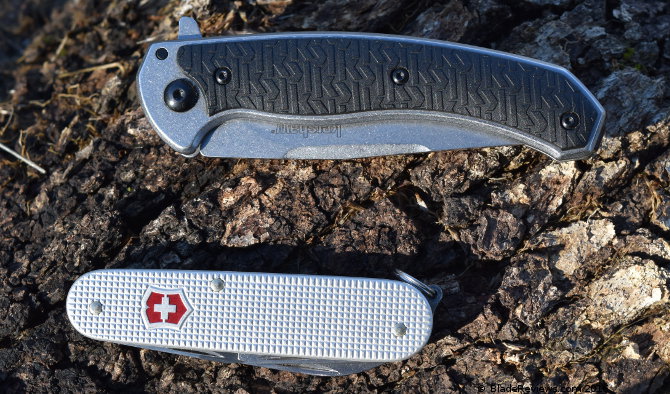Dmitry Sinkevich and Kershaw are on a roll. Following the success of the critically-acclaimed Atmos, they’re leaping back into service with the Concierge – A slightly larger pocket knife boasting the same sci-fi elegance and everyday accessibility.
[easyazon_cta add_to_cart=”default” align=”center” asin=”B07BC93ML6″ cloaking=”default” height=”42″ key=”tall-orange” localization=”default” locale=”US” nofollow=”default” new_window=”default” tag=”brdfkdfk-20″ width=”120″]Kershaw Concierge[/easyazon_cta]
With an out-the-door cost of $38 at BladeHQ, the [easyazon_link asin=”B07BC93ML6″ locale=”US” new_window=”default” nofollow=”default” tag=”brdfkdfk-20″ add_to_cart=”default” cloaking=”default” localization=”default” popups=”default”]Kershaw Concierge[/easyazon_link] is a compelling entry point into the mind of one of the world’s premier knife designers. Its dapper handle houses a deceptively simple blade, ready to trim the foil from your morning champagne or cut the rind from your brie at brunch. I spent a few weeks chauffeuring this knife between work and play, thanks to the generosity of the folks at Kershaw. Here’s what I’ve learned over my stay with the Concierge.
General Dimensions and Blade Details
The Concierge boasts a contoured, upswept blade some 3.25-inches in length. The stock is rather narrow across the shoulders (0.11-inches), with a hollow grind outfitted in a dapper gray titanium nitride coating. Beneath this lies Kershaw’s ever-present 8Cr13MoV steel.
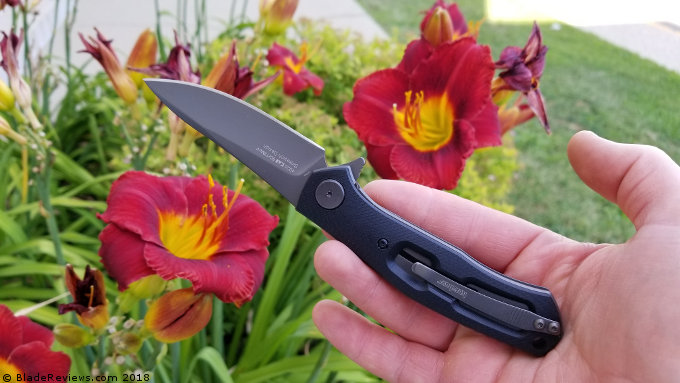
Now, I won’t go too far down the steel rabbit hole, since the similarly equipped Atmos has proven to be a capable worker. I’d still like to see something like 154CM or 14C28N on Kershaw’s budget models, but at least their 8Cr runs better than most.
The rest of the Concierge’s 7.25-inches is comprised of nicely crowned G-10, within which lies a stainless steel linerlock and KVT ball bearing system. Think about that for a second – Up until a few years ago, this would almost certainly have been running on Teflon or (if we were lucky) phosphor bronze washers. As it is, this newly affordable mechanism is sandwiched in a 0.55-inch thick handle, bringing the knife’s total weight to 4.3-ounces.
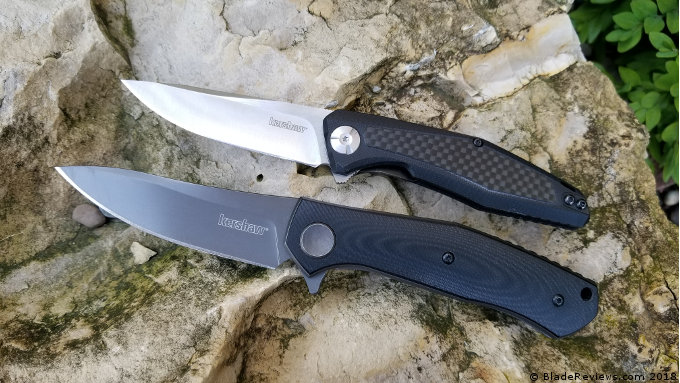
Now that we’ve covered the stats, let’s take a minute to talk about the knife’s real-world usage. The long, gentle curve of the blade is well suited for daily tasks. Its hollow grind had no trouble dealing with my typical mediums – apples, onions, cardboard, envelopes, and plastic wrap. The knife came sharp from the factory, and I’ve stropped it back to life with no issues. We’ll cover the details of the ergonomics in a moment, but I’m generally impressed with the everyday ability of the Concierge.
Handle, Ergonomics, and Pocket Clip
This is a knife that’s smooth all over – Like a tactical otter, or a slippery maitre d’. The subtle swells and arcs of the Concierge’s handle are really something to appreciate, especially when examined up close. Dmitry Sinkevich is known for his sleek, futuristic designs, and his style is in full force here.
The texturing of the G-10 handles is subtle and smooth. The large, dimpled pivot screws provide an interesting focal point for eye and thumb alike, and the chamfered steel liners are easy on the palm. I appreciate the jimping on the long backspacer, as well. Beyond its ergonomic appeal, it’s another point of visual grace in the knife’s overall design.
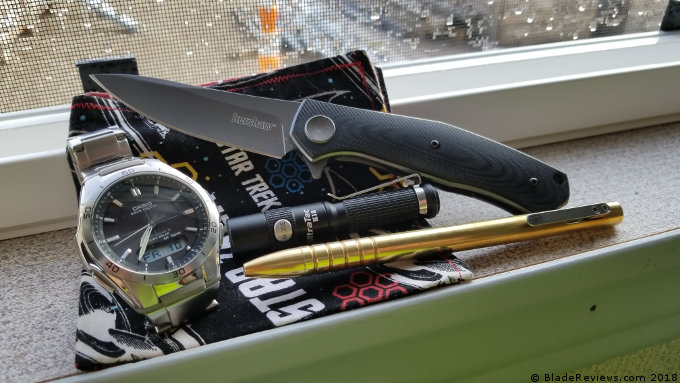
One of the more unique aspects of the Concierge lies in its recessed pocket clip. This single tongue of steel dips below level of the rest of the handle, thanks to a pair of unique cutouts. The tip peeks just above the horizon of the surrounding G-10, allowing users to slip the knife in and out of the pocket with ease. It takes a bit of practice, but I’m a big fan of the concept here. A recessed clip translates into a reduction of hot-spots in the hand, and Mr. Sinkevich has nailed its implementation. True, this means you’re left with a non-reversible clip. But for the majority of the knife-buying audience, this should be a hit.
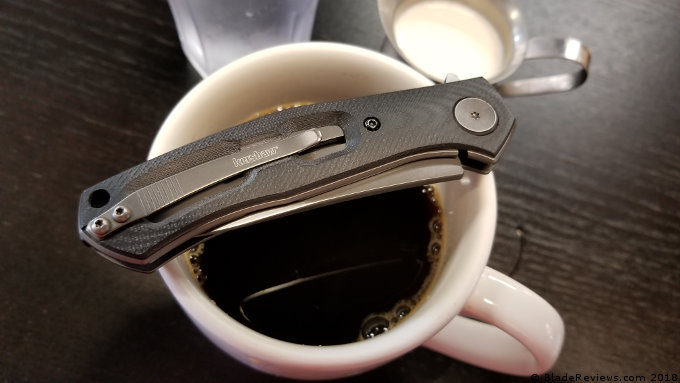
Deployment and Lockup
The Concierge employs some of the best fit and finishing I’ve seen on a sub-$100 blade. But once we transition into the functional realm, several budgetary bugaboos rear their ugly heads.
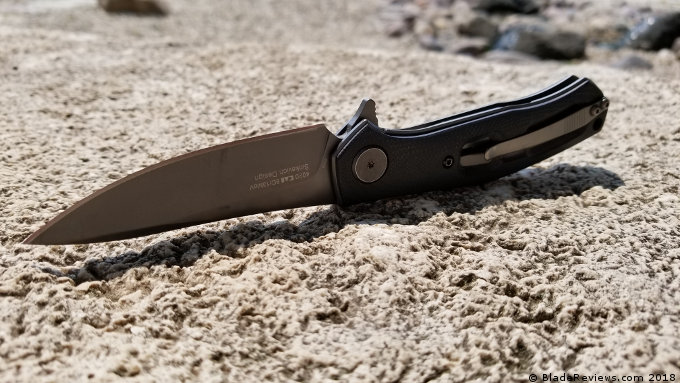
Let’s start with the positives. The opening action is strong, thanks to a solidly designed detent. The blade’s long flipper tab is well-ground and smooth, preferring a button-style press to the old light-switch flick. As mentioned earlier, it’s great to see a KVT bearing system at a price point formerly reserved for Teflon or phosphor bronze washers.
So, deployment is a breeze. Stowage, however, is an entirely different story. My particular test model came with some pretty significant lock stick. Even after a thorough breakdown, cleaning, and repeated application of graphite and Sharpie, it’s still not a terribly smooth process. Combine this with the rather thin (though well-chamfered) lock bar, and you’ve got a recipe for tenderized thumb meat.
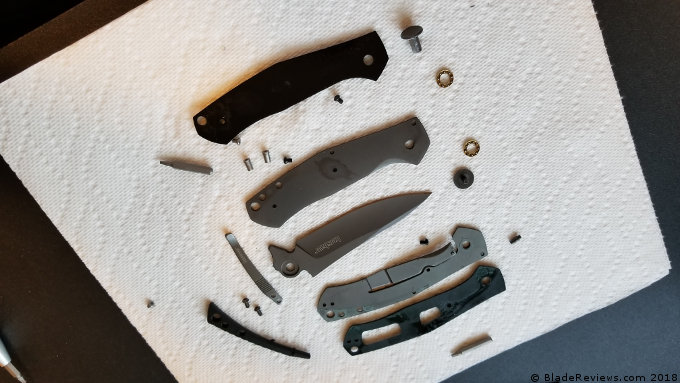
This removes much of the fidget-factor that made the Atmos so appealing. I’ve spent a decent amount of time messing around with the Concierge, and the lockbar hang-up isn’t as bad as it used to be. But, at least on my test model, the stickiness took some of the fun out of the experience. It’s a shame, especially given the KVT bearings and the perfect position of the flipper tab.
There’s also an odd note of metallic chatter upon closure, most noticeable between the disengagement of the lock and the blade tang hopping up over the detent. This is a minor issue, and I’m not concerned about the mechanical soundness of the lock system. But, it’s a small annoyance not present on the cheaper Atmos.
Kershaw Concierge Review – Final Thoughts
By this point, my preference should be clear – I ditched the $150 ZT0450 in favor of the Atmos, and the Concierge (while certainly a nice knife) isn’t going to kick its smaller cousin out of the collection. This is largely due to personal aesthetic (I prefer the uncoated blade), but the lock stick comes into play as well.
Minor production hang-ups aside, I still think this is an excellent knife. The recessed pocket clip and upscale aesthetic alone are enough to warrant the price of entry. I’d advise potential purchasers to adopt the try-before-you-buy attitude, in order to avoid picking up a model with the same lock stick issue I encountered. But, this is another strong collaboration between Kershaw and Dmitry Sinkevich. It’s a solid option at a respectable price, especially if the Atmos is too small for your palm.
[easyazon_block add_to_cart=”default” align=”center” asin=”B07BC93ML6″ cloaking=”default” layout=”top” localization=”default” locale=”US” nofollow=”default” new_window=”default” tag=”brdfkdfk-20″]
Editor: I recommend purchasing the Kershaw Concierge at [easyazon_link asin=”B07BC93ML6″ locale=”US” new_window=”default” nofollow=”default” tag=”brdfkdfk-20″ add_to_cart=”default” cloaking=”default” localization=”default” popups=”default”]Amazon[/easyazon_link] or BladeHQ. Please consider that buying anything through any of the links on this website helps support BladeReviews.com, and keeps the site going. As always, any and all support is greatly appreciated. Thank you very much.
